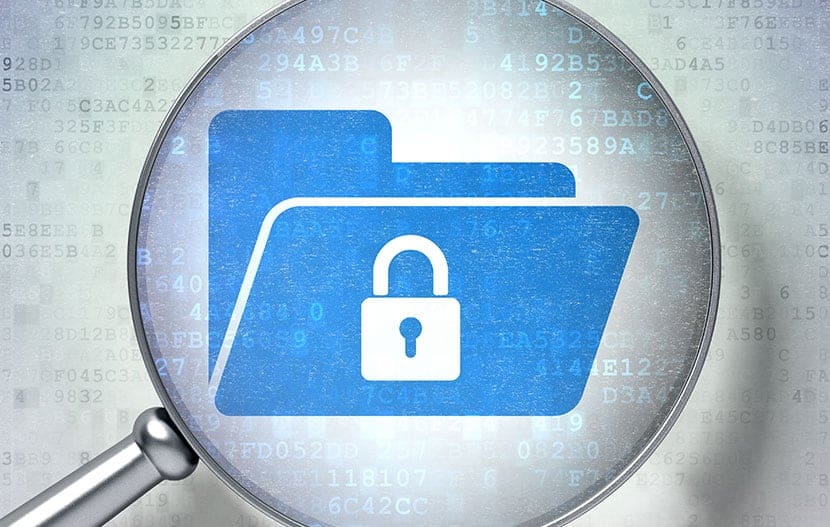Secure Data Storage Solution: 6 Rules to Making the Right Choice
As your business grows, so does your need for secured professional data storage.
Your digital database expands every day with each email you send and receive, each new customer you acquire, and each new project you complete. As your company adopts new business systems and applications, create more files, and generate new database records, it needs more space for storing this data.
The trend of massive digital data generation is affecting every business. According to analyst reports, the demand for data storage worldwide reached nearly 15,000 exabytes last year. With such an impressive figure, it is clear why choosing a professional storage solution is a frequent challenge in the business world.
What companies are looking for in a data storage solution
The rapidly growing data volume is only one of the challenges businesses are facing. As you compile more files, you also need better data protection methods. Securing mission-critical files and databases is a number one priority for today’s businesses that are increasingly exposed to cyber attacks.
You also want to ensure the data is accessible to your teams at any point. Whether they are working remotely or using multiple devices to access business documents, you need to provide them with easy and secure access to your company’s file system.
These are just some of the reasons why choosing secure data storage can be a tough task. When you add cost considerations to these reasons, the issue becomes even more complicated.
Most business execs do not understand storage access methods, performance, redundancy, risk, backup, and disaster recovery. This makes things much more difficult for IT administrators who need to justify the cost of additional storage requirements.
So why is storage so challenging to tackle and manage?
Most small businesses have limited storage systems, lacking the ability to expand as their needs grow. Their IT departments are left to deal with the challenge of handling high costs of storage along with the cost of security systems and software licenses.
Larger businesses, on the other hand, have an issue of finding a solution that is both flexible and secure. This is especially important for companies operating in regulated industries such as Financial Services, Government, and Healthcare.
Whatever the focus of your business, your quest for a perfect professional data storage solution may get complicated.
Use phoenixNAP's easy Data Storage Converter to convert data storage units.
1. Assess your current and future data storage needs

The first rule businesses should address is their current and future data storage needs.
Do you know the minimum storage requirements for your applications, device drivers, etc.? Of the space you have left, do you have enough to sustain business needs for the next five years?
If you are unsure, you can assess the amount of storage you have now and compare it to your needs in five years. Sure, you can restrict the size of your employee’s inboxes and the amount of storage they can use on the company shared drive. However, how long will your business be able to sustain these restrictions? You will get to a point where your business outgrows your data storage.
As you continue to add new customers and prospective client information to your customer relationship database (CRM), you can expect to see an exponential need for more storage. Even if you take precautionary measures to remove duplicate entries in your CRM and perform routine data cleanup, your need for additional storage will continue to grow. As your applications require updates and patches and you continue to add new apps to your business, your needs for more storage to house all of it will keep growing.
2. Consider storage functionality that you need
After you assess your current and future needs, considering data storage functionality is the next most important thing to consider. Although it is a fundamental aspect, it is easily overlooked. After all, what function does data storage perform anyway?
You should have already answered the question of why you are purchasing storage by this point. Typically, the goal is to lower IT costs, improve productivity, or support business expansion. Instead of having to buy physical servers or add hard drives that you have to maintain, you can centralize your data storage and management in the cloud.
The cloud would help you increase network performance and make data more accessible to your employees. Moreover, it will make your critical assets available in case of a system failure. These are just some of the factors that should drive you toward the optimal solution for your needs.
You will need to determine whether a shared public cloud would suit your needs well or whether you should consider a private option. Both have their advantages and are tailored for businesses with different needs. If your idea is to share less sensitive information in the public cloud, you may not need to invest significantly in data storage expansion. Dedicated and more secure storage options, which can meet the highest storage security and compliance needs, may be more expensive.
This is why you need to ask yourself what is it that you need right now and what goals you want to achieve in future. The answers to these questions also provide you with a starting point for your decision on which type of storage solution is right for your business.
If you do not know or cannot determine the storage function, you can assume that a shared solution is not necessary. Many small businesses do not need dedicated server providers anyway.
However, it all depends on where you forecast your business will be in a few years. If your organization is reliant on building a large customer base, you may consider mapping out how many customers or potentials you will have and how much storage each data record requires. Multiply that by the number of records you plan to have, and calculate a rough estimate of necessary storage.

3. Redefine your information security processes
Data security is a vital issue to address when choosing and implementing a storage solution. Without a sound storage security strategy in place, you risk losing your sensitive data. With the frequency of data breaches becoming more and more alarming, you should integrate security solutions into each step of your data management process.
Many businesses risk losing data stored on their infrastructure due to platform vulnerabilities or poor security management practices. This is especially true for companies using public or hybrid cloud solutions, where a third-party vendor carries part of the responsibility for data security.
While the cloud is not inherently insecure, the lack of storage security best practices and specialized data security software make your cloud data more vulnerable. To protect data adequately, you need to implement information security best practices on multiple levels in your company.
This involves training your employees on the best practices of cybersecurity, implementing new physical security procedures, hiring data scientists, and developing disaster recovery plans. If your data is stored on multiple platforms or with different providers, this may become a complicated issue, so you need to consider it before you make your choice.
You should keep the operational aspects of security in mind when choosing data storage such as security devices, security administrating, and data monitoring. Is your data encrypted in storage and transit?

Just because cloud storage is vulnerable doesn’t mean your data should be. Understand where your data is stored, how it is transferred, and who has access to the keys. For instance, what would an outage mean to your business? Do you have a valid SSL certificate? Does your CA have a good reputation? Some of the most recent major outages occurred because the SSL certificates were expired.
In addition to this, consider the type of data you backup. Sensitive data should be encrypted and secured separately from non-sensitive data. Many businesses use the hybrid cloud to ensure their critical data is stored on an impenetrable platform and protected by different types of data security measures.
You also need to enforce a strict data usage and storage policy company-wide. Employees should become aware of the sensitive nature of their customer information, as well as the best ways to protect data. With comprehensive security training, your employees can become the best guardians of your critical files.
4. Data backup and deduplication options
Another rule to consider when selecting a professional data storage solution is deduplication.
This is the process of identifying unique data segments by comparing them with previously stored data. With an autonomous backup, the same data can continuously be saved after deduplication is complete. Why save and backup duplicate data in the first place? The deduplication process saves only the unique data in a compressed format.
Deduplication reduces your storage requirement by eliminating any redundant data or information found. This also helps improve processing speed by reducing the server workload. Additionally, deduplication reduces the amount of data you have to manage and increases data recovery times.
Imagine the processing power you expend on sifting through gigabytes upon gigabytes of duplicate data, not to mention confusion of which files are relevant. Another way to think of why deduplication is essential to your data storage, you could end up paying for more storage than you need. You may end up saving money by eliminating duplicate data because you will not have to scale up your data storage.
You may find that deduplication offers more storage space that you are already paying for. You could use this newly found storage for applications or other storage needs.
Deduplication is a method of decluttering folders and databases. Depending on your data, this process could be performed through either manual or automatic processes. Your first step could be to find tools that seek similar data or files because you may not be able to find duplication easily. Once you find it, just delete or determine if you need it or not.
5. Compare speed and capacity of different solutions
Once you have chosen the storage option, you can determine the performance and capacity you need. Capacity is easy to determine and the most obvious function. Performance can be easy to explain but hard to quantify. You may have a hard time determining the needed bandwidth, latency, and burst speeds.

While there is a debate among IT professionals about processor speed versus storage, all you care about as a business owner is the performance of the storage you are paying for. In this case, you may wish to do a little research on which processors can yield the best performance for data storage. If you have selected a shared storage solution, find out what processors the storage provider uses.
You do not need a complete understanding of processor speeds. However, consider this: a dual or quad core processor of 2.8 GHz is better than a single core 3.4 GHz processor. Two cores run two programs simultaneously at 2.8 GHz, while the single core 3.4 GHz processor must share the processing power. This means that the 3.4 GHz processor is limited to operating at 1.7 GHz. In addition to processor speeds, memory speed should be adequately matching as well.
6. Find a provider on which you can rely
If considering moving to or buying additional shared storage in the cloud, consider the reliability behind it. You need to choose a credible vendor or a data center provider and ensure the service level agreement (SLA) is tailored to your needs.
A Service Level Agreement should list the acceptable amount of downtime, reliability, redundancy, and disaster recovery you should expect from a shared storage solution. You also need to consider your provider’s data security methods and data security technologies. This would give you peace of mind considering the availability of your data even in case of a disaster.
You should have your IT administrator chime in on this one because reliability o means the difference between having to wait hours or days for recovery in the event of a catastrophic failure. Even if you do not think you will need to access your data storage solution hourly, daily, weekly, or monthly, you need to ensure it is there when you need it.
The concepts of availability and redundancy are equally important. You should not think of storage as just a typical server. In almost all cases, data storage solutions are built and managed through enterprise servers all with the same physical components. Small businesses should look at a mid to high-end storage provider to support their lower-end servers. Regardless of the size of your company or the size of the servers your data storage resides on, all principles of reliability apply. You will have to weigh reliability and security risks and determine the best choice for your business.
For example, do you plan on using this storage for legacy data you might only access once a quarter or once a year? In this case, the reliability of storage will not be as critical as the data your employees need to access daily and hourly.
Conclusion: Finding a Secured Provider Of Data Storage
In summary, your need for professional data storage will grow along with your business. So will your need for a comprehensive and up-to-date security strategy.
To overcome this challenge, you need to perform an initial assessment of your current and future data storage needs, research storage vendors, and security options. Once you have a clear picture of the functions and needs your storage platform, you should consider how you can secure it adequately.
Building a security architecture that meets all your needs for flexibility and scalability may turn out to be a complicated task. Cloud computing does offer flexible, but you still need strong security and data management strategies to maintain the highest level of safety for your data. This is why choosing a secure storage option is an essential part of a company’s digital transformation strategy.
With the right solution, you can optimize all your critical processes. By following the tips outlined in this article, you increase your chances of making a great decision.